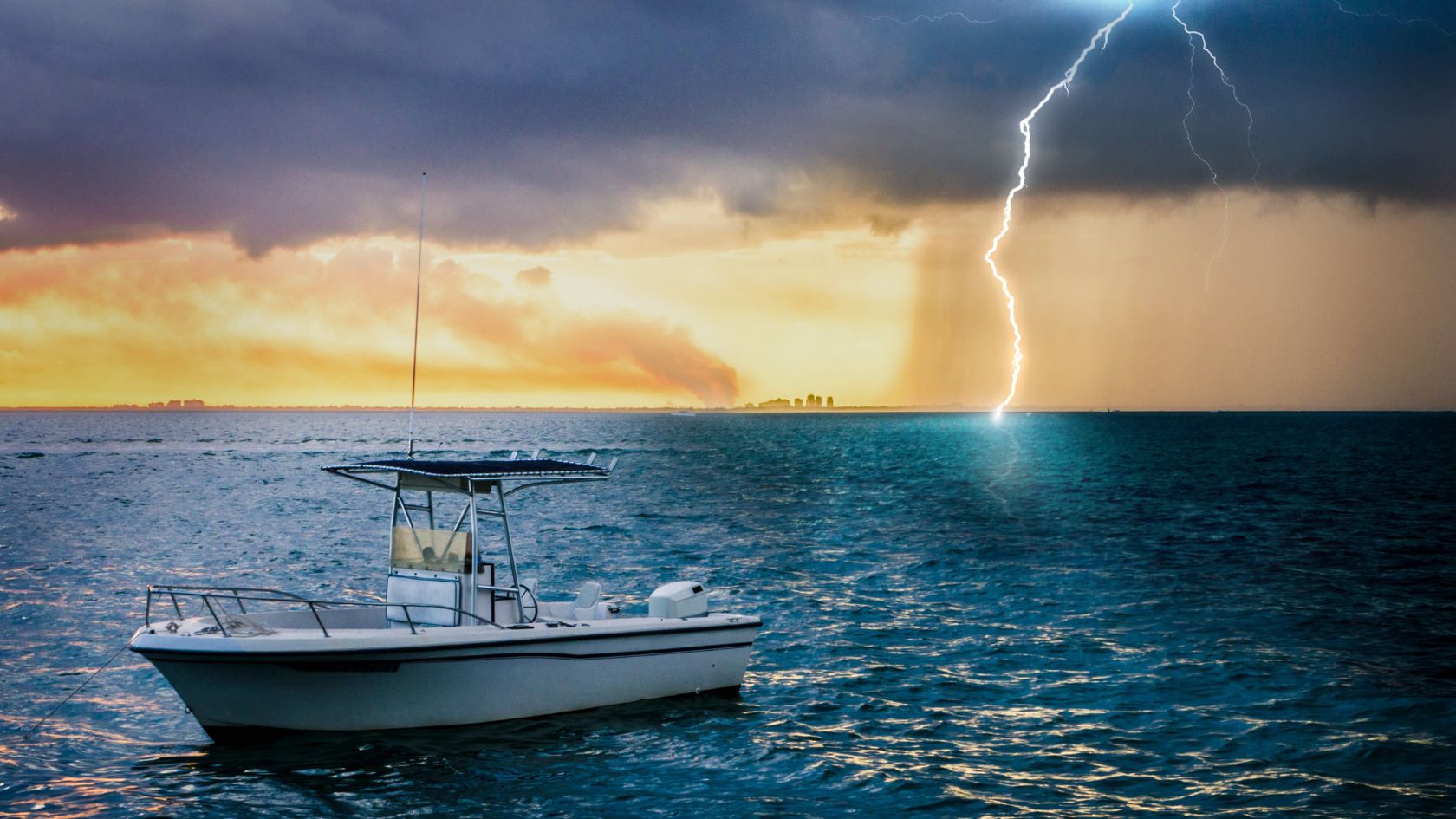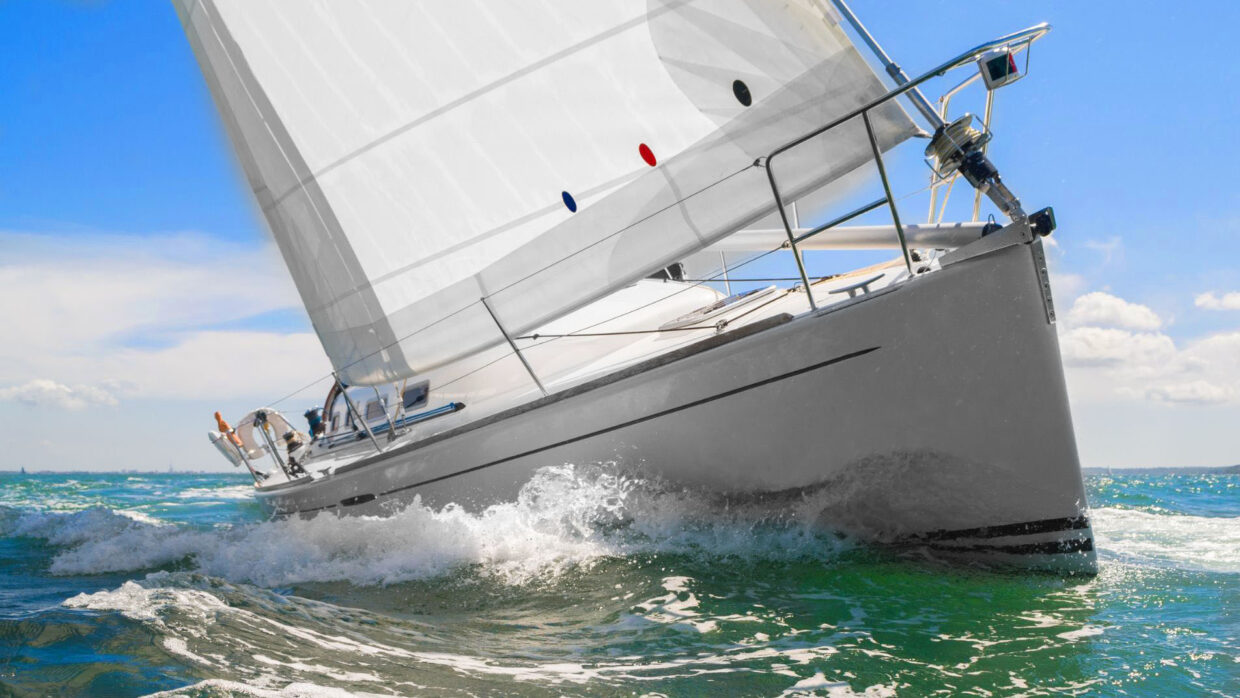Boat long enough and you will inevitably encounter a life-threatening storm. Heavy rain is unlikely to compromise your boat or put your life in danger yet lightning is a legitimate threat to life and limb. Though few know it, the unsettling truth is lightning has the potential to strike a whopping 15 miles away from the center of the storm. Prepare accordingly with the best boating equipment, print out the boating in a lightning storm guide below and you’ll take to the water in full confidence.

How to Prepare for Boating in Severe Weather
Though you can certainly check the weather forecast the day before hitting the water and the morning of your water expedition, there is always the chance that an unexpected storm will develop. Boat lighting protection is essential to surviving a storm on the water. However, if you are like most boat owners, you don’t know how to protect your boat.
Weather detection gear is essential to boat protection, safety and peace of mind. Boat lightning detectors have been around for years yet most boat owners are reluctant to add them as they assume the chances of a lightning strike are slim. Though a direct lightning strike is unlikely, it takes merely one bolt to end your life or ruin your boat. Spend for a new lightning detector with the industry’s latest technology and you’ll take to the water without worry.
Essential Lightning Detection Features
The industry’s best stormfront detection technology informs boaters of approaching storms. Lightning detection technology for boats has advanced to the point that it can identify storms upwards of 25 miles away. Add such a system to your boat, keep it on at all times and you’ll have a heads up when a storm approaches. Such detection devices are often of the stand-alone and self-contained variety, featuring real-time alerts of nearby bolts and harsh conditions.
Lightning detection systems are ready for immediate installation onto your boat dash. Ideally, such a system will be added to your boat at the time it is constructed. However, plenty of boats are built without such systems. The only downside to adding a lightning detection system after the construction of your boat is that it might not be optimally designed and added to reduce damage should a bolt strike the vessel.
If you are considering adding a lightning detection system to your boat, look for one with the proper bonding, grounding and protection for your vessel’s costly electronics. In particular, grounding is especially important. Sufficient grounding creates a conduction path from the point where lightning strikes down through the conductors to the water without generating side flashes or destroying the vessel’s hull.
A bonding system is necessary to safeguard boat passengers. The best bonding systems have conductors engineered to short out, ensuring voltage cannot spread across the boat’s fittings comprised of metal, ultimately reducing the chances of an electrical spark and subsequent fire. Such electronics protection systems minimize power supply along with voltage to protect the entirety of electronic systems on your prized boat.
We would be remiss not to mention that some lightning detectors are not optimal for boats as they are not built to withstand water exposure. Some lightning detectors require data connections that function at all times. Be patient when shopping until you find a lightning detector featuring a reliable loud speaker to alert you of storm conditions and you’ll enjoy your time on the water to the fullest.
Grounding Plates
The best boats have sizable grounding plates positioned within the bottom of the hull. The purpose of such a plate is to ground all metal components on the boat. Such grounding reduces lightning-charged electricity, sending it back out into the water.
Ground your boating vessel with number eight wire or better and you’ll safeguard all onboard electronics, panels, gauges, throttles, clutches and more. The best bonding systems connect to the boat’s underwater fittings to disperse the charge across the grounding plate for full protection.
Add a Mast for Boat Lightning Protection
The safest boats are characterized by lightning masts that are a minimum of one-third of the boat’s length. Add such a mast to your boat and you’ll enjoy a full 60-degree protection cone. However, there is still a chance that lightning will directly strike your boat or the surrounding water, causing damage to your beloved vessel or even your person.
Lifesaving Guidance for Boating in Lightning Storms
If you spot thunderstorms on the horizon or if the forecast calls for thunderstorms, be cautious. Choose to be safe instead of sorry in such circumstances by leaving your boat in the harbor until the atmosphere returns to stability.
There will inevitably be times when storms unexpectedly form when you are out on the water. Be cognizant of ground flashes by the boat that signal lightning has surfaced. If you hear thunder after such an ominous sign, begin counting. Each mile of distance equates to five seconds. Therefore, if you spot a flash and count to seven prior to the point at which you hear thunder, it is an indication that lightning is about a mile and a half away.
If you find yourself in the midst of a lightning storm, move all passengers below. If you are the boat helmsman, keep a hand in your pocket while operating the boat. If possible, use the autopilot, move the throttle to idle and put both hands in your pockets.
Remove all metal jewelry until the storm passes. Stand far away from metal objects, appliances and outlets. Stow the fishing rods, hunker down in the cabin and let the lightning storm play out. Hold strong for the next 20 minutes and the storm will pass, hopefully without damaging your boat. When in doubt, wait half an hour following the last sound of thunder before getting back to your regular boating activities.
How to Proceed After the Lightning Storm
When resuming on-water activity following a lightning storm, check the functionality of your boat’s electronics and engines to ensure they are fully operational. Every boater should be aware that it takes merely one bolt of lightning to strike near the vessel or fry the engine control unit and onboard electronics, potentially eliminating communication and navigation capability. Add a handheld GPS unit to your boat, keep a spare engine onboard and you’ll enjoy an invaluable peace of mind when you head out onto the water.




